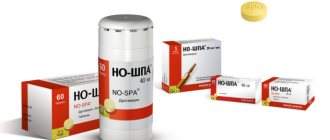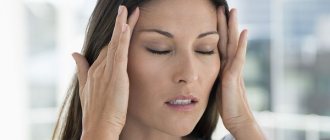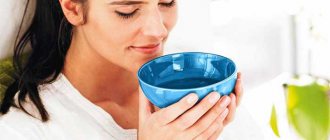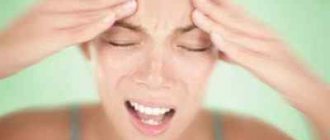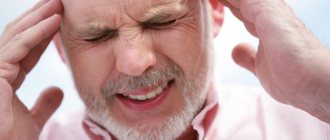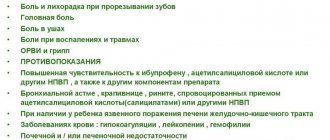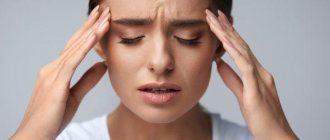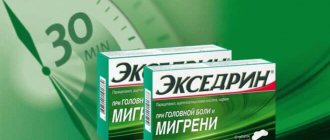Migraine is a chronic neurological disease (usually hereditary) characterized by recurrent severe headaches not associated with injury or stroke. A distinctive feature of migraine is that the pain often spreads to only one half of the head.
People unfamiliar with the symptoms of migraine may feel that the disease is over-emphasized. Well, a headache happens to everyone. But in fact, migraine attacks can have such a profound impact on a person’s social life and ability to work that some patients are classified as disabled for this reason alone.
The severity of the disease is determined by the number and frequency of attacks. With a mild form, they can happen only a few times a year, with a severe form - from 2 to 8 times a month. Studies have shown that women experience an average of 7 attacks per month, while men experience 6. The duration of an attack also varies - 7.5 hours in women versus 6 hours in men. In the fair sex, an attack most often develops due to climate changes (differences in atmospheric pressure, changes in air temperature, etc.), and in men - due to excessive physical exertion. Women experience what is called menstrual migraine. It occurs at the end of the cycle due to a drop in hormone levels in the body.
What is Cefaly? How does it work?
The Cefaly medical device was developed in Belgium.
The trigeminal nerve plays a role in most headaches and migraines. Its upper branches pass under the skin of the forehead above the eyes.
Cefaly is a trigeminal nerve stimulator. The device works through an electrode, which is located in the forehead area
Stimulation of the trigeminal nerve using Cefaly has a sedative effect on the nervous system. Regular repetition of this sedative effect changes the migraine threshold and reduces the frequency of attacks.
How is the procedure performed with the Cefaly device?
If after your appointment a neurologist prescribed you a course of Cefaly , when you come for the procedure:
- the skin of your forehead will be cleaned for better contact of the electrode with the skin;
- Cefaly device on the head
- turn on the required program. There are three of them: the first is intended for the treatment of an acute attack, the second - for the prevention of tension headaches, the third - for the prevention of migraine pain.
- the session lasts 20 or 40 minutes depending on the indications;
- the doctor can control the intensity of the effect during the procedure
- the device will turn off itself
First aid for migraine
You can treat migraine at home only if this is not your first attack and you clearly know the sequence of actions and the list of medications that alleviate the condition. If you are not at home, go out of the stuffy room into fresh air and breathe deeply. When you get home, first of all, create silence and darkness (or at least twilight) in the room and go to bed. Turn off the TV, computer, put away your phone and other gadgets. If possible, try to sleep.
You can try to relieve a pain attack without medications. Some patients benefit from a light head and neck massage, shampooing, a contrast shower, a warm bath, ice to the temples, or a very cold compress to the forehead. However, such remedies may only be effective for minor pain. If the pain is very severe, under no circumstances should you endure it, you should immediately take the medicine. Migraine medications come in different forms. If vomiting and nausea are present, discard the tablets in favor of suppositories.
The specific drug or drugs you choose will depend entirely on your doctor's recommendations. If you have not experienced migraines before, your first aid will be aspirin, paracetamol or non-steroidal anti-inflammatory drugs. When your condition returns to normal, consult your doctor immediately so that you are prepared for the next attack. This is important because there is no universal cure for this disease. All medications are selected individually and if you find one that is effective for you, you should not change it. By taking pills no more than twice a week, you will avoid addiction. If the drug no longer has the desired effect, you should not increase the dose. Overuse of medications for migraine can lead to the development of a chronic form of the disease. In this case, it is better to consult a doctor again, undergo additional examination and find a new drug for yourself.
Do not try to relieve pain with alcohol or smoking, they have a destructive effect on the body’s vascular system and can only increase pain. Better drink a cup of strong sweet tea with lemon. Coffee is not indicated for all migraine patients.
Traditional medicine recommends applying cabbage leaves, burdock, lemon slices or chopped raw potatoes to the forehead and temples to relieve pain from migraines. Many speak positively about aromatherapy, acupuncture, and yoga. But we still recommend using such methods only after consultation with a neurologist.
How quickly can Cefaly help me?
An effective course is 15-20 sessions.
Cefali device uses 3 programs :
- treatment of severe attacks of headache (migraine). A session of 40 minutes is usually prescribed 2-3 times a day.
- treatment and prevention of tension headaches that develop after stress. Duration of 1 session 20 minutes, course - 15-20 sessions in a row
- prevention of migraine pain, helps reduce the frequency of migraine attacks. Duration of 1 session 20 minutes, course - 15 sessions in a row
Migraine symptoms
- Throbbing pain in the head (usually in one part), which intensifies when turning the head or straining.
- Localization of pain in the same place (it may vary from attack to attack).
- Nausea and vomiting that does not bring relief.
- Vision disorders.
- Numbness and tingling in the limbs.
- Temporary speech impairment.
- Photophobia and noise intolerance.
A classic migraine attack usually lasts from 30 minutes to several hours. If the symptoms do not go away for several days, doctors talk about the person’s migraine status. This is a very serious condition that requires hospitalization, and sometimes even a stay in intensive care. If you do not seek help immediately, this pathology can lead to the development of a stroke or cerebral edema.
As a rule, patients can predict the imminent onset of the disease by characteristic warning signs called an aura. These include dizziness, a feeling of fog before the eyes, weakness, fatigue, impaired attention, drowsiness and pale skin. If you take medication during this period, then in some cases it is possible to stop the attack.
Reliability and safety of Cefali
The neurostimulation method has been used for more than 20 years.
The magnetic field around Cephali is less than 0.2µT (ie 2mG). This power is much lower compared to the field generated by, for example, an electric razor (usually between 15 and 1500µT when measured at a distance of 3cm) or a hair dryer (on average between 6 and 2000µT).
Cefali is CE marked according to the European Community medical standard and is ISO certified.
Nursing intervention plan
Short-term goals: Reduce headache from 5 to 2 points within 4 hours. Reduce blood pressure to 140/90 mm Hg. Art. in 12 hours. The patient will be familiarized with the essence of the disease, convinced of the need for treatment, diet and prescribed physical activity.
Long-term goals : by the time of discharge, the patient will be familiar with possible complications of the disease, their prevention and the risk of their development will decrease and will be convinced of the need to continue antihypertensive treatment, diet, and physical activity regimen.
| Nursing interventions | Motivation | Implementation | Grade |
| 1. Monitor the patient’s condition and hemodynamic parameters | For timely diagnosis of complications and provision of emergency first aid. | 1. Called the doctor. 2. Put the patient in bed with the head end elevated, asked not to get up and not move. 3. Unbuttoned the tight clothing. 4. Opened the window, allowing air access. 5. Gave the patient an anesthetic (baralgin 1 tablet) as prescribed by a doctor.6. I talked with the patient about how he would feel better after a while and tried to distract him from the pain. Inspired hope for improvement.7. Observed the general condition of the patient.8. Monitored blood pressure and pulse indicators, assessed pulse characteristics, measured blood pressure, respiratory rate.8. I recorded the result on the follow-up sheet. | The patient's condition is not worsening. Observation continues. |
| 2. Monitor compliance with diet No. 10, limiting salt to 5 g and liquid to 1.5 liters per day. | To reduce bcc and load on the cardiovascular system. | Monitored the patient’s compliance with the diet, diet and transmissions from relatives. Had a conversation with the patient about the features of the diet, the need to comply with it. Gave the patient a reminder about diet No. 10 for hypertension (Appendix 1). I checked the patient’s understanding of the diet, asked him questions, checked the correctness of the answers. Conducted conversations with relatives about the content of the packages given to the patient. | The patient and relatives demonstrate knowledge about the diet and understand the need to follow it |
| 3. Control the limitation of physical activity. | To reduce the load on blood vessels and heart | Monitored compliance with bed rest, provided physical comfort and mental peace - a comfortable position in bed; ventilated the room. Advised the patient to observe the ban on psycho-emotional stress. | The patient notes an improvement in his general condition and does not violate the regimen. |
| 4. Conduct a conversation with the patient and relatives about preventing psycho-emotional stress and creating psychological comfort. | To prevent the influence of stress factors on the patient | I talked with relatives and the patient about the importance of stress in the development of his disease or exacerbation, for the occurrence of complications. I told the relatives and the patient about methods of increasing stress resistance, relaxation to prevent complications. Answered questions that the patient and relatives had. Convinced relatives to provide the patient with the necessary assistance in creating a regime of psychological rest. | The patient’s relatives demonstrate knowledge about the disease, its treatment and prevention of complications. |
| 5. Conduct a conversation with the patient about the nature of the disease, possible complications and their prevention. | For effective treatment and prevention of complications. | Conducted a conversation with the patient about his disease, its causes, complications, treatment methods, their importance for the positive outcome of the disease and the prevention of complications. Answered the patient’s questions. Checked the assimilation of knowledge, asked questions to the patient and made sure his answers were correct. | The patient demonstrates knowledge about the disease, its treatment and prevention of complications |
| 6. Conduct a conversation with the patient’s relatives about the nature and duration of the disease, the danger of possible complications and their prevention | For effective treatment of hypertension and prevention of complications. | I talked with the patient’s relatives about the need for constant monitoring of blood pressure, taking antihypertensive medications prescribed by the doctor, following a diet and psycho-emotional well-being. I told the patient’s relatives about possible complications and their prevention, and first aid measures. I asked them questions to test their knowledge acquisition and understanding of the importance of the issues being discussed. She convinced them to provide the patient with the necessary help and support in his treatment. | The patient’s relatives demonstrate knowledge about the disease, its treatment and prevention of complications. |
| 7. Prepare the patient for additional research methods (ultrasound of the heart, Holter monitoring, etc.) | To clarify the diagnosis and correct treatment. | Explained to the patient the essence of the prescribed examination, the rules of preparation for it. Ensured that blood was taken for biochemical testing. Monitored the timely collection of the prescribed general blood tests from the patient by the laboratory assistant. Ensured that the examination results were available in the patient’s medical history. | The results of the examination are recorded in the patient's medical history. |
| 8. Disinfect equipment and care items. | To comply with the sanitary and anti-epidemic regime | Complied with SanPiN requirements when working with patient biomaterials and when performing injections. Supervised the work of junior medical staff. Ensured proper waste disposal. | Sanitary epidemiological violations. no mode noted |
| 9. Follow doctor's orders. | For effective treatment. | Before the doctor arrived, she put mustard plasters on the patient’s back of the head and calf muscles. As prescribed by the doctor, she administered intravenously to the patient:
Under the control of blood pressure and pulse, she gave a 10 mg nifedipine tablet under the tongue (chew and keep under the tongue without swallowing). | All appointments were completed in a timely manner, without complications. The patient's condition improved. |
| 10. Teach the patient how to take prescribed medications. | For effective treatment and stable reduction of blood pressure to normal levels. | She explained to the patient the rules and conditions for taking prescribed medications, emphasizing the importance of taking them in combination with a diet, in a timely manner and for life. | The patient demonstrates knowledge of effective administration of antihypertensive medications. |
| 10. Care for vomiting | To alleviate the condition and prevent aspiration of vomit | She gave the patient a sitting position to avoid aspiration of vomit. She gave the patient a tray to collect the vomit, a glass of water for rinsing the mouth, and a napkin on the chest. She suggested that the patient rinse his mouth with water after vomiting. She offered the patient a small amount of cool drink. Removed the vomit , ventilated the room, changed underwear, calmed the patient. Examined the vomit and determined its quantity, collected it for examination (as prescribed by the doctor), disinfected it. Taught the patient the technique of relaxation and deep breathing to control the urge to vomit. | The vomiting stopped. There were no complications. The patient's skin and underwear are clean. |
Adjacent files in item [UNSORT]
Source: https://studfile.net/preview/6024369/page:3/
Contraindications:
- Recent brain or facial trauma (less than 3 months ago).
- Damage to the skin in the area where the electrode is located on the forehead.
- Allergy to acrylate.
- Skin hypersensitivity: +/- 5% of people have forehead skin hypersensitivity and cannot tolerate the sensation of the Cefaly device.
- Other electrodes implanted in the head area.
- Trigeminal neuralgia.
In some cases, the following side effects :
- drowsiness
- redness of the skin at the site of exposure (due to stimulation of local blood supply, disappears a few minutes after the session)
- allergy to the gel that is applied to the electrode, in the form of a skin rash on the forehead. VERY RARELY! In such cases, special electrodes can be used.
- headache during or after the session. This complication happens VERY RARE!
Treatment
- The patient must be provided with peace (mental and physical).
- Distraction procedures: hot foot baths, mustard plasters (on the interscapular area, back of the neck), warm or cold compress, slightly squeezing the head.
- Nonsteroidal anti-inflammatory drugs (naproxen, ibuprofen, ketoprofen, diclofenac), their combinations with codeine, caffeine, ergot alkaloids. For vomiting, parenteral administration of drugs (in the form of injections, suppositories) is recommended.
- Sedatives (herbal based, tranquilizers).
- Serotonin agonists – zolmitriptan, sumatriptan.
- Tonics (ginseng, eleutherococcus).
- Drugs that activate metabolism in nervous tissue (encephabol, piracetam).
- For severe nausea and vomiting, metoclopramide, domperidone, and parenteral fluid administration are recommended.
- For migraine status, dexamethasone and Relanium are prescribed.
- For frequent and severe attacks, preventive treatment with anti-inflammatory drugs, antidepressants, and antiserotonin drugs is recommended.

